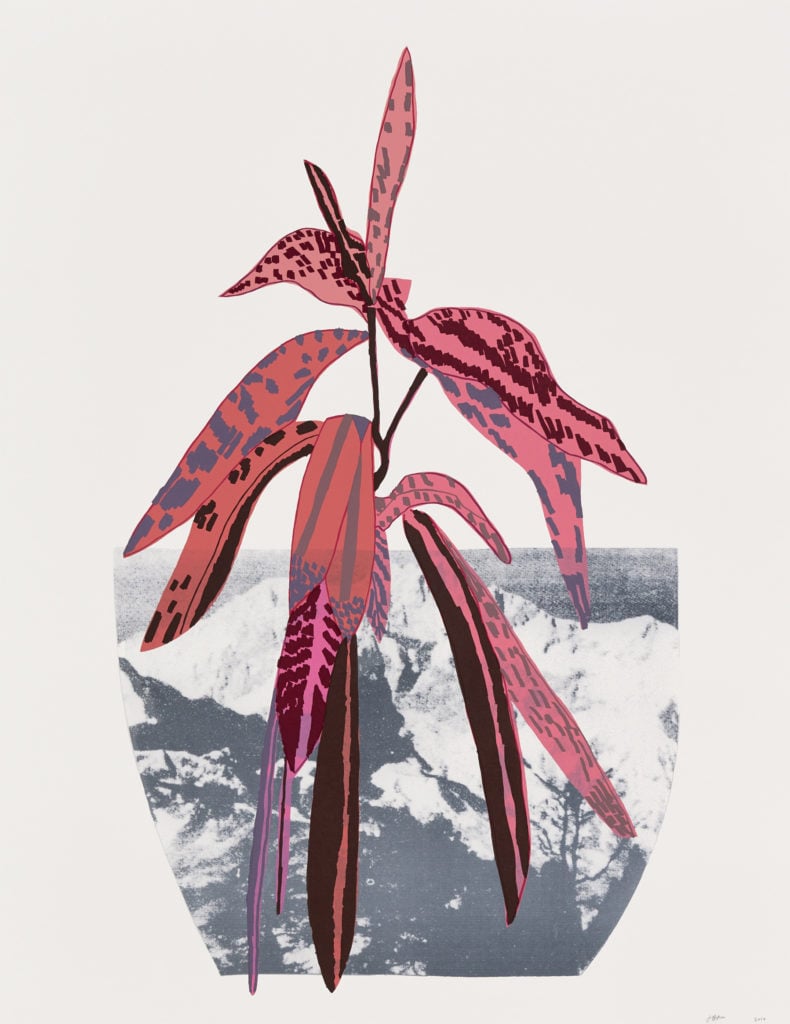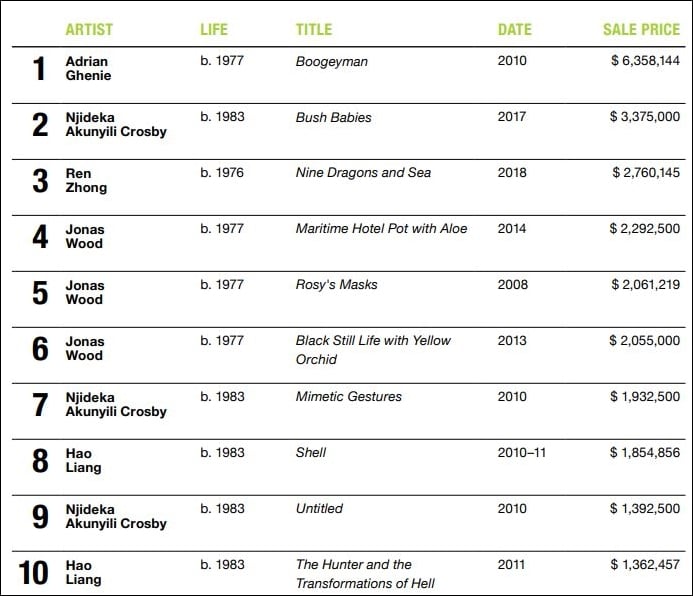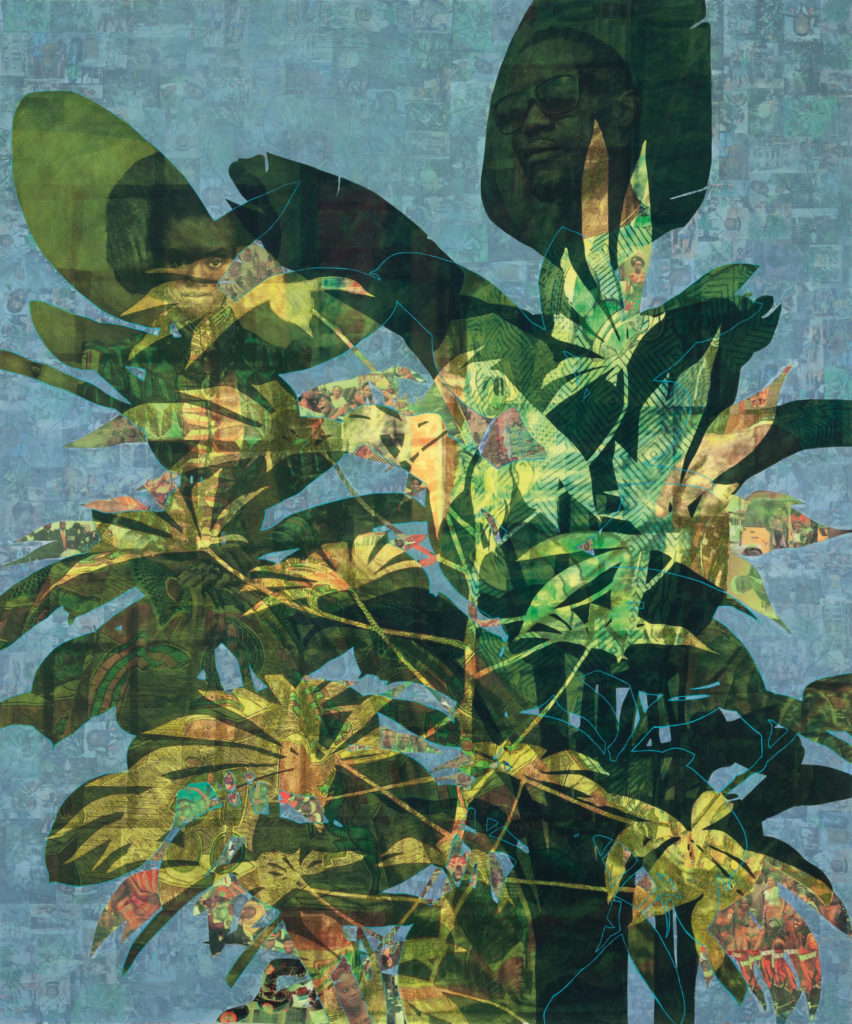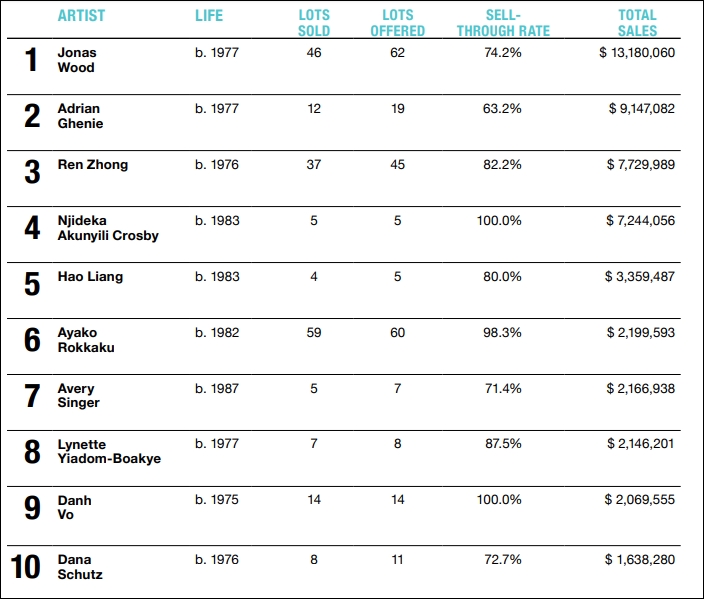Market
‘Contemporary Artist’ Means Everyone From Andy Warhol to Avery Singer. Here’s a New Category for the Art of Our Time
The artnet Intelligence Report brings a bit of market clarity for artists born after 1974 by giving them their own category.

The artnet Intelligence Report brings a bit of market clarity for artists born after 1974 by giving them their own category.

Tim Schneider &
Julia Halperin

In the lead-up to its marquee November sales in New York in 2017, Christie’s infamously announced that its trophy consignment, Leonardo da Vinci’s Salvator Mundi, dated circa 1500, would be sold in its postwar and contemporary evening auction. The move may have prompted one of the better art-market in-jokes in recent memory—namely, that the (heavily conserved) masterpiece belonged in a contemporary sale because most of it had been painted within the past 10 years—but it also epitomized the problem of terminology in the auction sector.
In short, how are we supposed to agree on how certain categories are performing if we can’t even agree on how those categories should be defined?
Christie’s is hardly alone in contributing to the confusion. Unlike its primary rival, Sotheby’s abandoned the term “postwar” years ago. But last November, the house sold Georgia O’Keeffe paintings from 1926 and 1928 in its contemporary evening sale. Examples of categorical promiscuity at other houses are easy to come by.
This lack of consensus about categories doesn’t just skew the perceptions of professionals trying to assess the importance of, say, the Impressionist and Modern sector. It also renders invisible a meaningful distinction within “contemporary” art—obviously, the only category that living artists are actively evolving.
What important trends are we obscuring if we lump the likes of Andy Warhol, who died in 1987, and Avery Singer, who was born in 1987, into the same category?
To address this problem, we at artnet News and the artnet Price Database decided to define a new category in our latest Intelligence Report: the ultra-contemporary. It strictly applies to artists born from 1975 to the present day, as a way to bring valuable visibility to the youngest talents with strengthening secondary markets. (We defined contemporary as artists born from 1945 to 1974.)
This means that our breakdowns of the 10 best-selling works and the 10 best-selling artists at auction in 2018 include a special section dedicated to artists under 45 years old. The top-selling work by an ultra-contemporary artist was Romanian painter and auction phenom Adrian Ghenie’s Boogeyman (2010), which fetched $6.4 million at Sotheby’s contemporary evening sale in London in October. (As a small measure of the term’s use, Bloomberg has already picked up on it.)

The top 10 best-selling works in the ultra-contemporary category in 2018. © 2019 artnet Intelligence.
One reason the ultra-contemporary designation is valuable: the dynamics at work for these artists are different from those shaping the auction performance of, say, Jean-Michel Basquiat, an artist with a long market history and a finite amount of work to be traded.
The most popular artists on the ultra-contemporary list—Njideka Akunyili Crosby and Jonas Wood, both of whom appear three times—are, unsurprisingly, very difficult to acquire on the primary market, which drives up their prices at auction. Museums—and collectors who commit to donating the work to museums—are first in line to buy from galleries. Last fall, for example, Shane Campbell Gallery sold a series of 24 of Wood’s tennis court drawings as a single work to the Japanese collectors Masahiro and Yoshimi Maki, who pledged to donate them to the Los Angeles County Museum of Art.

Njideka Akunyili Crosby, Bush Babies (2017). Courtesy Sotheby’s.
Of course, the $1 million-to-$3 million prices achieved by these works pale in comparison to the eight-figure numbers fetched by contemporary darlings like Jeff Koons and Peter Doig. But notably, they also outpace major photographs by art history-sanctioned artists Cindy Sherman and Andreas Gursky that also sold at auction in 2018. (This reveals another bias in the auction market: Paintings by younger, less tested artists still outperform photographs by some of contemporary art’s biggest names.)
The shape of this new ultra-contemporary category also offers a look at how taste may be shifting. While there are no women on our list of the top 10 best-selling contemporary artists at auction, the ultra-contemporary list is evenly split between male and female artists.
The list also reinforces that current tastes have shifted away from bro-tastic abstract painting toward subtler, figurative work. The top eight artists are all figurative painters, each with a unique style and subject matter.

The top 10 best-selling artists at auction in the ultra-contemporary category. © 2019 artnet Intelligence.
Our creation of the ultra-contemporary category lands only a small blow for the sake of auction-market clarity, of course. But for readers and professionals with a keen interest in the newest art rising to prominence at auction houses everywhere, it is at least a jab in the right direction.
For a full look at the top 10 best-sellers, in-depth data analysis, and more, download the artnet Intelligence Report’s spring 2019 edition here.